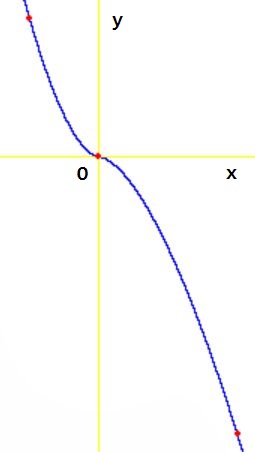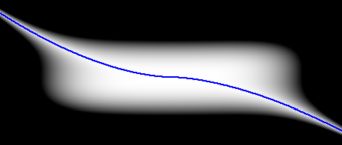

Update.
When solving for $y$ (with help of MAPLE) we find something that looks like
a decent function, within a prescribed range e.g. $-1 < x < +2$ ; see picture.
(Bonus: integer solutions original question at red spots)
$$
y(x) = \left[\frac{\left(-54 x^2 + x^3 + 6 \sqrt{81 x^4 - 3 x^5}\right)^{1/3}}{3}
+ \frac{x^2}{3\left(-54 x^2 + x^3 + 6 \sqrt{81 x^4 - 3 x^5}\right)^{1/3}}
+ \frac{x}{3}\right] x
$$
So it's still not clear to me why the derivative $y'(0)$ would be somehow undefined.


A rather extreme close-up , namely $-1/10 < x < 1/10$ : picture on the right , doesn't reveal any other slope than zero at $(0,0)$ . Whiter means that the function $f(x,y) = 4 x^5 + y^3 - x^2 y^2\;$ is closer to zero; it is seen that $\;f(x,y)\;$ is very close to zero indeed in the neighborhood of $(0,0)$ , thus suggesting that the tangent may be ambiguous there. But is it?
My try. Draw a circle with radius $r > 0$ and $(0,0)$ as its midpoint: $$ x = r \cos(\phi) \qquad y = r \sin(\phi) $$ Substitute this into the basic equation $\;x^2 y ^2 = 4 x^5 + y^3\;$ and divide by $r^3$ : $$ 4 \cos^5(\phi)\, r^2 - \cos^2(\phi) \sin^2(\phi)\, r + \sin^3(\phi) = 0 $$ If $\;r \rightarrow 0\;$ i.e. becomes very small, then function values in the neighborhood of $\;(0,0)\;$ only depend on the last term $\;\sin^3(\phi)$ . Meaning that $\phi \approx 0$ or $\phi \approx \pi$ . The tangent through these two points has slope zero. Don't know if this counts as a proof.